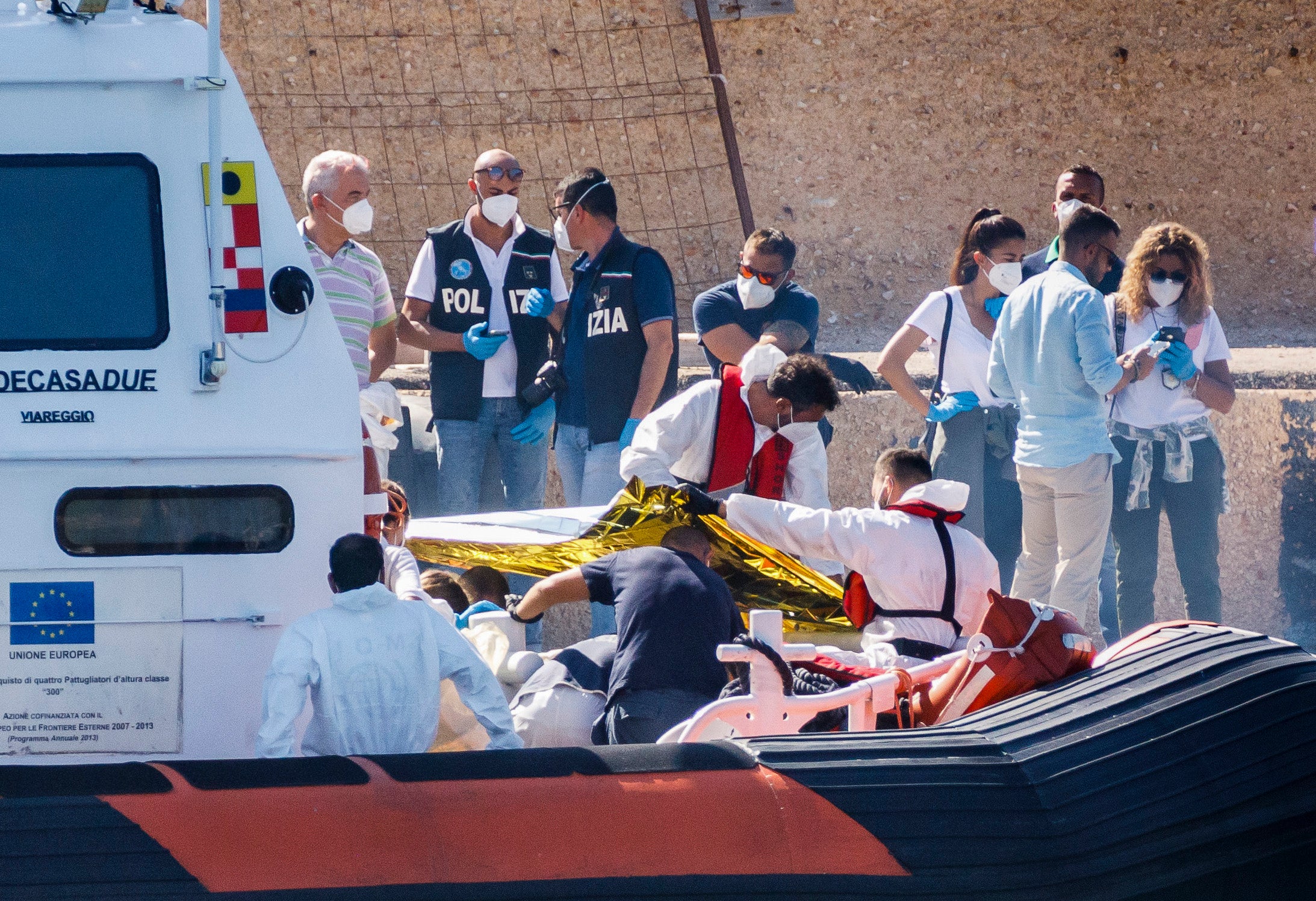Report: More than 29,000 migrants to Europe died since 2014
The International Organization for Migration says more than 29,000 people have died on migration journeys to Europe since 2014, with 5,000 perishing in the last two years alone

Your support helps us to tell the story
From reproductive rights to climate change to Big Tech, The Independent is on the ground when the story is developing. Whether it's investigating the financials of Elon Musk's pro-Trump PAC or producing our latest documentary, 'The A Word', which shines a light on the American women fighting for reproductive rights, we know how important it is to parse out the facts from the messaging.
At such a critical moment in US history, we need reporters on the ground. Your donation allows us to keep sending journalists to speak to both sides of the story.
The Independent is trusted by Americans across the entire political spectrum. And unlike many other quality news outlets, we choose not to lock Americans out of our reporting and analysis with paywalls. We believe quality journalism should be available to everyone, paid for by those who can afford it.
Your support makes all the difference.More than 29,000 migrants have died trying to reach Europe since 2014, with 5,000 deaths in the last two years, the International Organization for Migration said in a report Tuesday.
The U.N. agency's Missing Migrants Project spoke of “increasing numbers of deaths seen on routes across the Mediterranean, on land borders to Europe and within the continent.”
According to its report, the deadliest migration route continues to be the Central Mediterranean, where 2,836 people have died since January 2021 attempting to reach Italy or Malta, mainly from Libya and Tunisia.
The latest known casualties were newborn twins who died on a boat that had left Tunisia carrying 60 people. The Italian coast guard picked up the survivors Tuesday and took them to the Italian island of Lampedusa.
Rescue operations on that route by Italian military vessels and charity-operated boats off Italy’s southern coasts have intensified in recent weeks, with humanitarian ships often waiting days before obtaining permission to dock in Italian ports.
Hundreds of rescued people have been temporarily sheltered at an overcrowded reception center on Lampedusa, where new arrivals are registered daily.
According to the IOM report, the second-deadliest path was the Atlantic route from West Africa to Spain’s Canary Islands, where more than 1,500 deaths were recorded since 2021.
Researchers said their tally was likely an undercount as it didn't include boats that vanish at sea without witnesses.
Rising numbers of deaths also were observed in other areas that border Europe, as well as in Greece, the Western Balkans and the English Channel, according to the report.
The dead whose nationalities are known were mainly from Africa and the Middle East. But for more than 17,000, the country of origin is unknown.
Many of the deaths “could have been prevented by prompt and effective assistance to migrants in distress,” the Missing Migrants Project said.
The Italian coast guard on Tuesday rescued about 400 people from a boat that left from Libya, according to Alarm Phone, a volunteer-run hotline for migrants and refugees in trouble at sea. Italy’s coast guard did not immediately return phone and email messages about the incident.
Alarm Phone also said that two large wooden boats carrying nearly 1,400 people combined left together from eastern Libya and reached Italy and Malta’s search and rescue zones in distressed conditions Tuesday.
“We were told that one carries about 700, the second about 650 people. Reportedly, a person died, and engines aren’t working anymore. A huge rescue operation is needed!” the group tweeted.
Ten hours later, without any news from authorities about their rescue, the group tweeted again: “People in danger reported that 12 people have died or are unconscious and many suffer from dehydration.”
Italy has struggled for more than a decade to prevent migrants crossing in smugglers’ boats from north Africa.
In her first speech to parliament, Italian Premier Giorgia Meloni on Tuesday pledged a crackdown on irregular migration, relaunching the idea of a naval blockade on boats leaving north Africa.
“We want to stop illegal departures, finally smashing human trafficking in the Mediterranean,” Meloni said, adding that her government would present a proposal to the European Union for an operation in agreement with authorities in North Africa.
The plan would include establishing places in African countries where international organizations would evaluate asylum requests, deciding “who has the right to remain in Europe and who doesn’t,” she explained.
“All we want to do is to avoid that the selection of who’s coming to Italy is done by smugglers,” she said.
Similar ideas have in the past been rejected by North African countries.
One of Meloni’s main governing coalition partners is Matteo Salvini, the leader of the right-wing League party. As interior minister in 2018-19, Salvini sought to stop rescue boats from bringing migrants to Italian ports.
In its report, the Missing Migrants Program for the first time released numbers on deaths from so-called pushbacks, or forced expulsions, by European authorities. It counted 252 deaths based on reports from survivors.
Pushbacks are unlawful under international and EU law, as they violate the right to seek asylum and the legal principle which prohibits the return of anyone to a place where they would risk persecution, torture or deadly threat.
The report said 97 of the pushback-related deaths were documented in the Central Mediterranean, 70 in the Eastern Mediterranean, 58 on the Turkey-Greece land border, 23 in the Western Mediterranean and 4 on the Belarus-Poland border.
“Such cases are nearly impossible to verify in full due to the lack of transparency, lack of access, and the highly politicized nature of such events, and as such these figures are likely an underestimate of the true number of deaths,” the report said.
___
AP journalist Renata Brito reported from Barcelona, Spain.
___
Follow AP’s coverage of migration issues at https://apnews.com/hub/migration